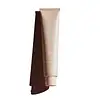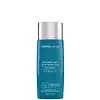What's inside
What's inside
 Key Ingredients
Key Ingredients

 Benefits
Benefits

 Concerns
Concerns

 Ingredients Side-by-side
Ingredients Side-by-side

Zinc Oxide 20%
Cosmetic ColorantIsododecane
EmollientCoco-Caprylate/Caprate
EmollientButyloctyl Salicylate
Skin ConditioningCyclohexasiloxane
EmollientCyclopentasiloxane
EmollientTrihydroxystearin
Skin ConditioningPolymethylsilsesquioxane
Cetyl Dimethicone
EmollientSilica Silylate
EmollientPolysilicone-11
Polyglyceryl-3 Polyricinoleate
EmulsifyingHydroxyapatite
AbrasiveSodium Hyaluronate
HumectantTocopheryl Acetate
AntioxidantGlycine Soja Oil
EmollientTitanium Dioxide
Cosmetic ColorantButyrospermum Parkii Butter
Skin ConditioningOryza Sativa Extract
AbsorbentOryza Sativa Germ Extract
EmollientIsostearic Acid
CleansingMica
Cosmetic ColorantPolyglyceryl-3 Diisostearate
EmulsifyingEthylhexyl Palmitate
EmollientTin Oxide
AbrasiveEthyl Linoleate
EmollientSilica Dimethyl Silylate
EmollientAscorbyl Tetraisopalmitate
AntioxidantPentylene Glycol
Skin ConditioningButylene Glycol
HumectantCI 77492
Cosmetic ColorantCI 77491
Cosmetic ColorantCI 77499
Cosmetic ColorantZinc Oxide 20%, Isododecane, Coco-Caprylate/Caprate, Butyloctyl Salicylate, Cyclohexasiloxane, Cyclopentasiloxane, Trihydroxystearin, Polymethylsilsesquioxane, Cetyl Dimethicone, Silica Silylate, Polysilicone-11, Polyglyceryl-3 Polyricinoleate, Hydroxyapatite, Sodium Hyaluronate, Tocopheryl Acetate, Glycine Soja Oil, Titanium Dioxide, Butyrospermum Parkii Butter, Oryza Sativa Extract, Oryza Sativa Germ Extract, Isostearic Acid, Mica, Polyglyceryl-3 Diisostearate, Ethylhexyl Palmitate, Tin Oxide, Ethyl Linoleate, Silica Dimethyl Silylate, Ascorbyl Tetraisopalmitate, Pentylene Glycol, Butylene Glycol, CI 77492, CI 77491, CI 77499
Zinc Oxide 12%
Cosmetic ColorantWater
Skin ConditioningC12-15 Alkyl Benzoate
AntimicrobialButyloctyl Salicylate
Skin ConditioningIsododecane
EmollientLauryl PEG-8 Dimethicone
Dimethicone/Vinyl Dimethicone Crosspolymer
Skin ConditioningPropanediol
SolventDimethicone
EmollientCaprylyl Methicone
Skin ConditioningNiacinamide
SmoothingTridecyl Salicylate
Skin ConditioningTrilaureth-4 Phosphate
EmulsifyingDimethiconol
EmollientLauryl PEG-10 Tris(Trimethylsiloxy)Silylethyl Dimethicone
EmulsifyingMaltodextrin
AbsorbentSodium Chloride
MaskingDisodium Lauriminodipropionate
CleansingTocopheryl Phosphate
CleansingBisabolol
MaskingEthylhexylglycerin
Skin ConditioningAllantoin
Skin ConditioningDimethylmethoxy Chromanol
AntioxidantCaesalpinia Spinosa Fruit Pod Extract
Tremella Fuciformis Sporocarp Extract
AntioxidantHelianthus Annuus Sprout Extract
Skin ConditioningCaprylyl Glycol
EmollientHexylene Glycol
EmulsifyingTetrasodium Glutamate Diacetate
Isoceteth-10
EmulsifyingSilica
AbrasiveSodium Hydroxide
BufferingPhenoxyethanol
PreservativeSodium Benzoate
MaskingBenzoic Acid
MaskingDehydroacetic Acid
PreservativeIron Oxides
CI 77492
Cosmetic ColorantCI 77499
Cosmetic ColorantZinc Oxide 12%, Water, C12-15 Alkyl Benzoate, Butyloctyl Salicylate, Isododecane, Lauryl PEG-8 Dimethicone, Dimethicone/Vinyl Dimethicone Crosspolymer, Propanediol, Dimethicone, Caprylyl Methicone, Niacinamide, Tridecyl Salicylate, Trilaureth-4 Phosphate, Dimethiconol, Lauryl PEG-10 Tris(Trimethylsiloxy)Silylethyl Dimethicone, Maltodextrin, Sodium Chloride, Disodium Lauriminodipropionate, Tocopheryl Phosphate, Bisabolol, Ethylhexylglycerin, Allantoin, Dimethylmethoxy Chromanol, Caesalpinia Spinosa Fruit Pod Extract, Tremella Fuciformis Sporocarp Extract, Helianthus Annuus Sprout Extract, Caprylyl Glycol, Hexylene Glycol, Tetrasodium Glutamate Diacetate, Isoceteth-10, Silica, Sodium Hydroxide, Phenoxyethanol, Sodium Benzoate, Benzoic Acid, Dehydroacetic Acid, Iron Oxides, CI 77492, CI 77499
 Reviews
Reviews

Ingredients Explained
These ingredients are found in both products.
Ingredients higher up in an ingredient list are typically present in a larger amount.
Butyloctyl Salicylate is a chemical UV filter structurally similar to octisalate. It is a photostabilizer, SPF booster, emollient and solvent. This ingredient helps evenly spread out ingredients.
According to a manufacturer, it is suitable for pairing with micro Titanium Dioxide, Zinc Oxide, and pigments.
Photostabilizers help stabilize UV-filters and prevents them from degrading quickly.
Learn more about Butyloctyl SalicylateCi 77492 is also hydrated iron III oxide. It's sole purpose is to give a yellow hue to products.
Iron III oxides are classified as inorganic chemicals for coloring.
Synthetically created Ci 77492 is considered safer than those naturally found. This is because the synthetically created version may contain less impurities. Iron oxides are generally non-toxic and non-allergenic.
Learn more about CI 77492Ci 77499 is also hydrated iron III oxide. It is created from mixing red and black iron oxides. This helps give shades of darkness to a product.
Iron III oxides are classified as inorganic chemicals for coloring.
Isododecane is a fragrance, emollient, and solvent.
As an emollient, it helps your skin stay soft and hydrated. Emollients help trap moisture into your skin.
Isododecane's role as a solvent makes it a great texture enhancer. It spreads smoothly on skin and does not leave a sticky feeling behind. Isododecane also helps prevent color transfer in makeup products.
Isododecane is not absorbed into skin.
Learn more about IsododecaneZinc Oxide is a mineral broad-spectrum UV filter; it is the broadest UVA and UVB reflector approved by the FDA. It also has skin protectant and skin soothing properties.
Zinc oxide is one of the most effective broad-spectrum UV filters. It protects against UVB, UVAII, and UVAI. In comparison to its counterpart titanium dioxide, zinc oxide provides uniform and extended UVA protection.
Another great benefit? This ingredient is highly photostable so it won't degrade easily under sunlight.
A common myth is that mineral UV filters are widely believed to primarily reflect UV light.
However, modern research shows titanium dioxide absorbs UV radiation like chemical filters (~95% absorption & 5% reflection).
Zinc oxide has great skin soothing properties so you'll likely find this in sunscreens formulated for sensitive skin or babies/children. It is unlikely to cause "eye sting" like other sunscreen ingredients.
Regulatory agencies consider zinc oxide to be non-toxic and safe. It has also been shown to not penetrate the skin.
Unfortunately, this ingredient does leave a visible white cast. This is why mineral sunscreens are often less cosmetically elegant than chemical or hybrid ones.
In cosmetics, zinc oxide can be found in both non-nano and nano-sized forms. The nano version is used to reduce white cast and improve the texture of sunscreen formulas.
There are ongoing concerns surrounding nano-zinc oxide's impact on marine ecosystems and whether it can be absorbed into skin.
Regarding marine ecosystems and coral reefs, there is no conclusive evidence that any form of zinc oxide (or any other sunscreen ingredients) will cause harm. The science is still developing but many consumers are keeping a close eye on this issue.
Please note, many destinations have reef-safety sunscreen rules. For instance, the U.S. Virgin Islands advises all visitors to use non-nano mineral sunscreens.
There has also been some stir about whether micronized or nano zinc oxide has potential photoxicity and absorption through the skin/lungs.
An in-vitro (done in a test tube or petri dish) study demonstrated micronized zinc oxide to have potential phototoxicity. There's no need to fret; the EU Commission's Scientific Committee on Consumer Safety has stated, "The relevance of these findings needs to be clarified by appropriate investigations in vivo." Or in other words, further studies done on living organisms are needed to prove this.
Current research shows zinc oxide nanoparticles do not penetrate intact or sunburned skin. They either remain on the surface or in the outermost layer of dead skin (stratum corneum).
Zinc oxide is one of only two classified mineral UV filters with titanium dioxide being the other one.
Fun fact: Zinc has been used throughout history as an ingredient in paint and medicine. An Indian text from 500BC is believed to list zinc oxide as a salve for open wound. The Ancient Greek physician Dioscorides has also mentioned the use of zinc as an ointment in 1AD.
Learn more about Zinc Oxide